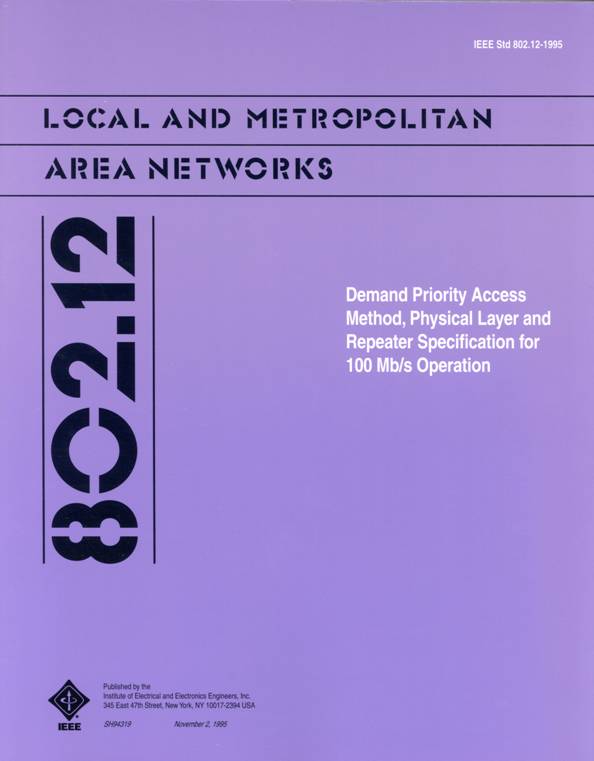
The IEEE 802.12 standard. Unofficial motto: “combinatorics inside”.

15-port hub conforming to IEEE 802.12, marketed under the trade name 100VG-AnyLAN.
In 1993, Simon Crouch and I designed a coding scheme for 100Mbit/s data transmission over copper telephone cabling. This scheme satisfied physical, economic and social constraints, allowing a tenfold increase in transmission speed while maintaining error detection capability. The coding scheme was approved as part of the IEEE 802.12 international standard in 1995, and resulted in five granted patents. Several networking companies produced hundreds of thousands of 100VG-AnyLAN routers, hubs, bridges and switches that implemented this coding scheme in accordance with the 802.12 standard.
For many years, we were obliged to keep the design principles underlying the code structure a commercial secret. However, we were able to explain them in full in 2007, in collaboration with Jim Davis. The constraints were satisfied simultaneously using a combination of geometrical insight, combinatorial reasoning, computer search, and linear algebra (even though the code itself is not linear).


15-port hub conforming to IEEE 802.12, marketed under the trade name 100VG-AnyLAN.